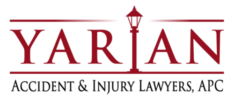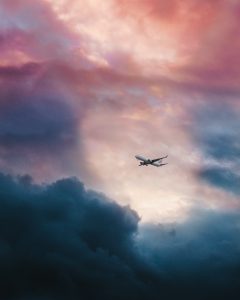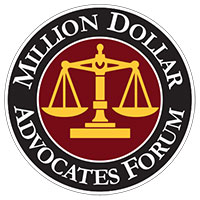Burbank Aviation Accident Lawyer
Los Angeles County area is the central hub for many airline carriers, as well as being home to one of the nations’ busiest airports. Though an airplane/aviation accident is less likely to happen than a vehicular accident, the potential risks of airplane/aviation accidents can be severe, leading up to death. Contact a personal injury attorney if you or a loved one were involved in an airplane/aviation accident.

Lawyer For Airplane/Aviation Accidents In Burbank, CA
Whether you were a passenger or an occupant of a private aircraft or commercial airplane, you have the right to file a lawsuit for compensation if you suffered injuries during an airplane/aviation accident. Injuries resulting from an airplane or aviation accident can be severe and even fatal, resulting in high medical costs and lost income. Recovering damages can aid your financial concerns following the airplane/aviation accident.
Our attorneys at Yarian Accident & Injury Lawyers, APC are dedicated to protecting the rights of victims harmed by negligence. Our litigation experience in the courtroom can make all the difference in your case. Let us help! Even if your actions contributed to your injuries in the accident, you can still file for compensation to hold the primary individual responsible accountable for the accident.
Call (818) 459-4999 to schedule a confidential consultation with one of our attorneys for airplane/aviation accidents or fill out an initial contact form. Yarian Accident & Injury Lawyers, APC works with clients throughout California including Burbank, Los Angeles, Riverside, Irvine, Fresno, and more.
Overview of Airplane/Aviation Accidents
- Types of Airplane/Aviation Accidents
- National Public Flying Laws
- Operation Regulations
- Equipment Requirements
- Training Requirements
- Liability for Airplane/Aviation Accidents
- Additional Resources
Types of Airplane/Aviation Accidents
Despite efforts from the Federal Aviation Administration (FAA) to reduce errors and improve safety in aeronautics, avoidable accidents can still happen. Below are some common types of airplane/aviation accidents:
- Collision (i.e., terrain, obstacles, birds)
- Take-off/Landing
- Mid-air Collision (two aircraft collision mid-air)
- Runway Incursion
- System Failure
- Cockpit Explosion
- Turbulence
- Dynamic Rollover (helicopters)
Any party that interacted with the aircraft or plane and got injured has grounds to file a lawsuit. That includes a passenger, flight crew, runway crew, or even the pilot.
National Public Flying Laws
Pilots, commercial airlines, airports, and aircraft occupants have requirements, laws, and regulations to follow aboard an aircraft. Below are some common national public flying laws:
- Traumatic Delays at U.S. airports – Most commercial airlines are supposed to provide food and water, bathrooms, and medical care when necessary if the delay has extended past the two-hour limit
- Air Carrier Access Act — As part of the regulation against airline discrimination of people with disabilities, airlines, and aircraft must accommodate people with disabilities, including having specific spaces and procedures available for an individual with disabilities during a flight and in an emergency.
- Child Restraint Systems (CRS) – Child Restraint Systems (CRS) are a child safety seat, similar to that of vehicles, that provide extra protection for a child during a flight. Only specific seats are permitted on planes and must follow FAA regulations.
- Passengers are required by law to fasten and keep their seatbelt fastened while the “fasten seatbelt” light is on.
- Food, beverage, and tableware must be adequately stored when the aircraft is moving on the surface, taking off, or landing. Passengers abide with instructions provided by the flight crew.
- Serving cart and table tray must be stowed away when the aircraft is moving on the surface, taking off, or landing. Passengers must follow instructions by the flight crew.
Operations Regulations
The Code of Federal Regulations (CFR) Title 14 Aeronautics and Space and the Federal Aviation Administration (FAA) has regulations and recommendations that all those in operation, direction, and control of aircraft have to follow to reduce any predicaments while flying and aboard an airplane. Some regulations of in-flight services can include:
- Follow the flight altitude minimum height of 1,000 feet above the surface or from any mountain, hill, or other obstruction to flight, as well as other altitudes requirements.
- Follow safety precautions when the airplane is operating in weather conditions such as ice, frost, or snow.
- The following airplanes must be operated with a second pilot in command:
- Any aircraft needing more than one required pilot
- Any large airplane
- Any commuter category airplane
- Pilot in command must assure that every occupant of the plane is aware of the smoking laws during flight and use of emergency equipment aboard the aircraft.
- Pilot in command must assure that baggage on the plan is property stored either in cargo space or inside a cargo storage compartment or under the passenger seat when appropriate.
Equipment Requirements
Federal regulations advise that an aircraft must have the following on board before taking off:
- Water Floating device for every occupant onboard, for overwater flights (i.e., life vests, life rafts, life preserver)
- Navigation equipment for over-water operations
- Basic emergency equipment at all times (i.e., fire extinguisher, first aid kit, megaphone)
- Per 14 CFR §91.409, every piece of equipment must be inspected to ensure that it is suitable for working conditions and ready to use.
14 CFR §91.533 also requires airplane operations to meet the following flight-attendant requirements:
- For airplanes having more than 19 but less than 51 passengers on board, one flight attendant.
- For airplanes having more than 50 but less than 101 passengers on board, two flight attendants.
- For airplanes having more than 100 passengers on board, two flight attendants plus one additional flight attendant for each unit (or part of a unit) of 50 passengers above 100.
Pilot/Flight Crew Training Requirements
All pilots operating a civil aircraft of the U.S. must have the required authorization to fly an airplane, including a pilot certificate, temporary certificate, or legal approval. 14 CFR §61.11 states a pilot may not carry an expired pilot certificate or act in-command of or according to his or her status rating on an aircraft. Re-issuing a pilot certificate may be dependent on several factors, including the year of issuance. Pilots with pilot-in-command ratings must also carry a first-class medical certificate on board, allowing him to operate an aircraft. In contrast, a second-in-command pilot should have a second-class medical license.
14 CFR §61.129 states commercial pilot training of:
- Single-engine class rating must log at least 250 hours of flight time
- Multiengine class rating must log at least 250 hours of flight time
- Helicopter rating must log at least 150 hours of flight time
14 CFR §61.109 states private pilot training of:
- Single-engine rating must log at least 40 hours of flight time
- Multiengine rating must log at least 40 hours of flight time
- Helicopter rating must log at least 40 hours of flight time
For most cabin crew, compliance with the air carrier program is enough to get authorized to fly on planes. Most of these training programs run from one month to six months, which requires flight attendants to pass a test. However, the cabin crew must only be allowed to serve aboard a flight if they have demonstrated familiarity with the cabin functions and emergency equipment in case of an emergency or evacuation.
14 CFR §91.503 & 14 CFR §91.505 state the pilot in command of an airplane shall ensure that the following flying equipment and aeronautical charts and data are ready to use during a flight. Similarly, the pilot in command must also, before a flight, become familiar with the flight manual of the airplane and any other necessary equipment. Each member of the crew shall also become familiar with the emergency equipment installed on the aircraft and the procedures to be followed in an emergency.
Liability for Airplane/Aviation Accidents
The leading causes of airplane/aviation accidents can be attributed to the following:
- Pilot Error
- Lightning
- Fuel Starvation
- Sabotage/Hijacking
- Manufacturing/Design Flaws
- Air Traffic Control Error
- Defective Runways
- Weather
Negligence
Assessing the fault during an aviation/airplane accident can be difficult because so many individuals form part of the construction and operation of the aircraft. The pilot or flight crew may have made an error or failed to follow protocol when necessary, which could all be due to a lack of training. Lack of knowledge or training is grounds for considering a negligence suit, in which an entity or individual failed to provide a “duty of care” to the situation.
Product Liability
An airplane/aviation accident can turn into a product liability suit if the aircraft or operation system was the cause of the accident. Liability can be blamed on the maker or designer of the plane or the inadequate use of instructions or warnings on the system or aircraft. A personal injury claim based on negligence or product liability, not related to a governmental entity, has a statute of limitations of two years, except for the discovery rule.
Governmental Liability
Because most airports are under the jurisdiction of a government entity, an airport can also be liable for its lack of training among air traffic control dispatchers or defective runways. A claim filed against a public body that includes a wrongful death or personal injury needs to be submitted no later than six months after the date of the cause of action. The statute of limitations varies by date of discovery of injury or date of the finding of cause of action.
Additional Resources
Federal Aviation Administration (FAA) | Passenger Safety – The Federal Aviation Administration (FAA) is the department under the U.S. Department of Transportation that is in charge of managing U.S. aerospace activity. The FAA is in charge of regulating air travel and implement safety and security procedures when aboard an aircraft.
Aircraft Owners and Pilots Association (AOPA) | Advocacy Page | The Aircraft Owners and Pilots Association (AOPA) is an organization created for aviation pilots. Not only does it give helpful information relating to pilot training and education, but it also provides the latest news about air travel and its engagement with government regulations.
Airplane/Aviation Accidents Attorney in Burbank, CA

Whether you were injured in a commercial plane or private plane accident, you deserve the right to compensation if the injury is attributed to another individual’s negligence. Being involved in an aviation/airplane accident can impact your life forever. You may be dealing with the loss of a loved one or a high amount of medical bills from your injury. Yarian Accident & Injury Lawyers, APC can help mitigate your loss of income or companionship following the accident.
Your right to compensation can alleviate the financial burden you face following the accident. Do not remain silent. You can be losing thousands of dollars in settlement. Yarian Accident & Injury Lawyers, APC can represent you in court proceedings if need be. Call (844)291-1911 to schedule a consultation with one of our airplane/aviation attorneys or fill out a free case review form.
We will fight until you receive fair compensation for your accident.
Yarian Accident & Injury Lawyers Burbank Office
700 N Central Ave Suite 470
Burbank, CA 91203
(818) 459-4999









